AJA has released the T-TAP Pro, a new video output device for editors, colorists, and VFX artists, targeting 4K and HDR workflows. I wrote a series of articles throughout the fall about the various components of an HDR editing workflow. Covering software, workstations, GPUs, I/O Cards, and monitor options, it looked at the state of Adobe based HDR post production at the time. But new things continue to be developed all the time, and this new device from AJA is a hardware output solution that is much more tailored to the needs for most editors who need to output and view HDR content. The KONA 5 is a great tool, which supports nearly everything you can think of for both input and output from SD to 8K. But most editors are now using file based workflows that have no need to input via SDI or HDMI, (or even output those ways besides for monitoring purposes) and few users are viewing content in 8K. So what a majority of editors and other video professionals need, is a solid and reliable way to output UHD and 4K content to their monitor or other device, and ideally one that offers them support for, and control over, HDR color settings.
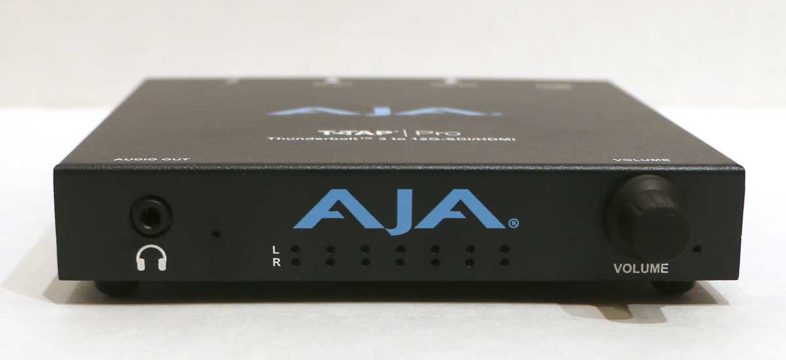 Enter the new T-TAP Pro. The original T-TAP was introduced in 2014 for $295 and offered HD-SDI and HDMI 1.3 output in a tiny Thunderbolt1 connected package. The new T-TAP Pro is a considerable step up from that, supporting 12G-SDI, and HDMI 2.0 with HDR simultaneously, and even 12RGB support for demanding color work, but also adding analog audio output, and a rotary volume control with visual meters. This necessitated a larger box, with a separate power supply, and a price tag of $795.
Enter the new T-TAP Pro. The original T-TAP was introduced in 2014 for $295 and offered HD-SDI and HDMI 1.3 output in a tiny Thunderbolt1 connected package. The new T-TAP Pro is a considerable step up from that, supporting 12G-SDI, and HDMI 2.0 with HDR simultaneously, and even 12RGB support for demanding color work, but also adding analog audio output, and a rotary volume control with visual meters. This necessitated a larger box, with a separate power supply, and a price tag of $795.
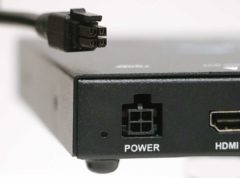 For most people, this takes just the features you actually need from a KONA 5 card or Io 4K Plus (Single 12G-SDI out, HDMI out, Analog out) and places them in a much more affordable package. I tested the T-TAP Pro on my Razer Blade laptop, outputting to my Canon Reference Display, in direct comparison to the KONA 5 card in my workstation. Being able to output HDR from my laptop to my reference monitor is great, and having full control over the output options, from HLG or PQ in various color spaces is very helpful in ensuring that what I am seeing on the display is an accurate representation of the images I am editing.
For most people, this takes just the features you actually need from a KONA 5 card or Io 4K Plus (Single 12G-SDI out, HDMI out, Analog out) and places them in a much more affordable package. I tested the T-TAP Pro on my Razer Blade laptop, outputting to my Canon Reference Display, in direct comparison to the KONA 5 card in my workstation. Being able to output HDR from my laptop to my reference monitor is great, and having full control over the output options, from HLG or PQ in various color spaces is very helpful in ensuring that what I am seeing on the display is an accurate representation of the images I am editing. 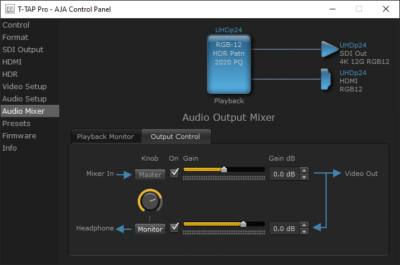 The volume control is interesting in that it can control either: just the analog headphones output, or the audio being output embedded in the SDI and HDMI signals. I can see use cases for both options, but it defaults to headphone control, as to wisely avoid unintentionally tampering with the main output levels.
The volume control is interesting in that it can control either: just the analog headphones output, or the audio being output embedded in the SDI and HDMI signals. I can see use cases for both options, but it defaults to headphone control, as to wisely avoid unintentionally tampering with the main output levels.
AJA also released version 16 of their drivers and utilities for KONA and Io devices. This includes more support and options for HDR workflows on a wider variety of their devices, new support for HDR over SDI and recognition of HDR metadata for both capture to .MOV files and playback, among many other new features. For KONA 5 users, the new drivers allow “fast switching” into 8K firmware without rebooting, which I have been benefitting from during testing. It also improves the integration with Premiere Pro, giving better support for existing HDR options, and fixing a UI bug that got introduced by a recent Windows update. AJA also has a big push to support new remote workflows, a few of which they detail in a new section of their website.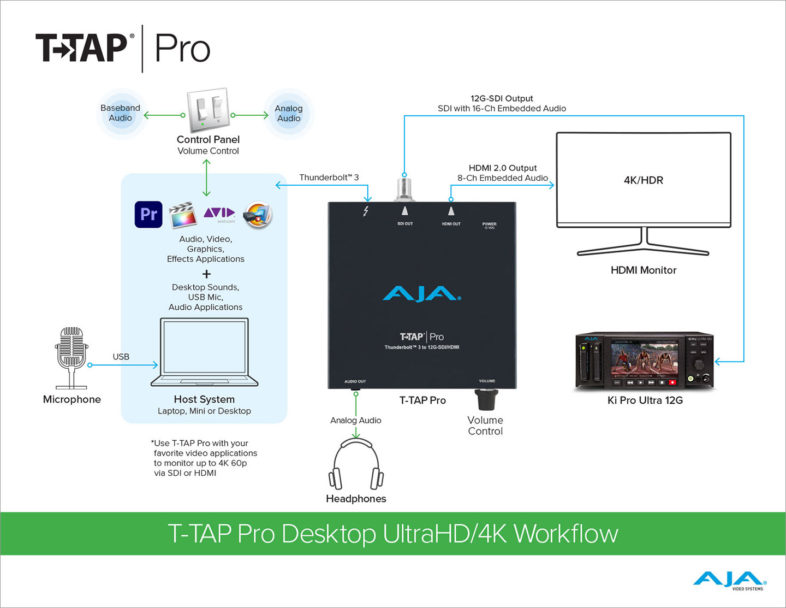
The other new development that has been announced, relevant to HDR monitoring for Premiere Pro users, is that Adobe is working to support native HDR output for PC users, by replacing the existing OpenGL playback engine with a new DirectX12 playback engine that natively supports HDR on Windows. I have been testing this in the public Beta builds, and it is very promising, while still needing some work before it is ready for primetime. This allows HDR content to be viewed in HDR directly in the IU panels, if the UI monitor is HDR compatible in Windows, and/or output from the GPU to an external full-screen display via Mercury Transmit. This approach only supports HDR10 output, as that is the only method that Windows supports HDR content at the GPU level, but Premiere Pro can convert HLG content to HDR10 on the fly for playback on Windows HDR displays. This offers PC users a cheaper, software based alternative to hardware I/O out, albeit one limited to HDR10, with less control over the accuracy of the processing pipeline.
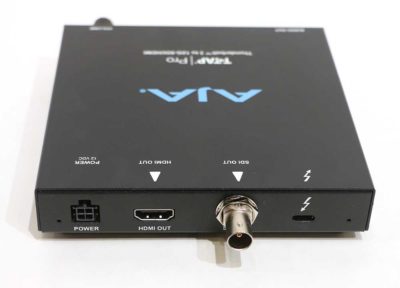 This will eventually remove the absolute requirement for a dedicated IO card for Windows users, although those still offer certain advantages, including more reliable control over the output pipeline, audio sync, and support for SDI signals, as well as offloading CPU/GPU tasks. But it allows the project, source, and program panels to display content in HDR, as well as full screen Transmit output from the GPU, which will benefit HDR editors, even if they already have and use a hardware output card. Adobe also added HDR viewing support to After Effects, by adding DirectX12 playback. This requires projects to use 32bit color processing, set an HDR compatible working space, and enable display color management. It also allows editors or VFX artists on a laptop to connect an HDR TV to their system, and start viewing and editing content in HDR.
This will eventually remove the absolute requirement for a dedicated IO card for Windows users, although those still offer certain advantages, including more reliable control over the output pipeline, audio sync, and support for SDI signals, as well as offloading CPU/GPU tasks. But it allows the project, source, and program panels to display content in HDR, as well as full screen Transmit output from the GPU, which will benefit HDR editors, even if they already have and use a hardware output card. Adobe also added HDR viewing support to After Effects, by adding DirectX12 playback. This requires projects to use 32bit color processing, set an HDR compatible working space, and enable display color management. It also allows editors or VFX artists on a laptop to connect an HDR TV to their system, and start viewing and editing content in HDR.
Mac based Premiere editors on the other hand, will require a hardware output to view content in HDR, and the T-TAP Pro is a solid choice for those looking for a hardware video output solution. The device is also supported in FCP, Avid, After Effects, and most other applications that currently support KONA and Io4K products.
The device does run hot, due to its size and capabilities, and the power connector is an unusual 4pin square that looks like an ATX connector, so don’t lose the included power supply. I’d like to see a PCIe version of this, even though that wouldn’t support the volume control and meters, but this is also coming from a PC user, who doesn’t have Thunderbolt on every system. AJA does provide a list of tested PC systems for those who want to ensure compatibility. Mac users will be well served by the new T-TAP Pro whether they are on a MacBook, an iMac, or a Mac Pro. I’d also love to see an HDMI only version that was fully bus powered, a true replacement for the original T-Tap, since 99% of editors are going to be outputting to an HDR TV over HDMI. (Especially since Mac users have no alternative for getting HDR content out to their display.) But this should meet the monitoring and output needs of most users who are working with HDR content in UHD or 4K, and for much lower cost than AJA’s other existing options.

